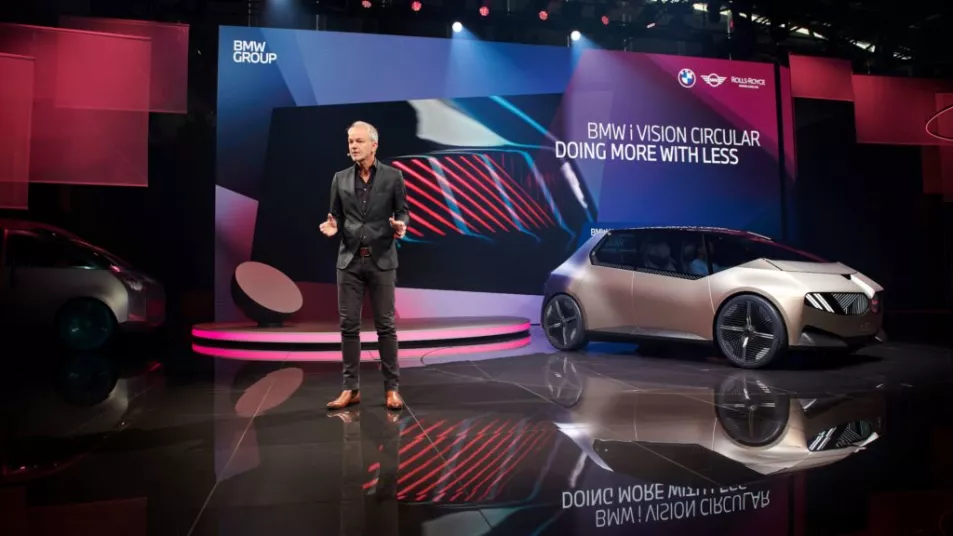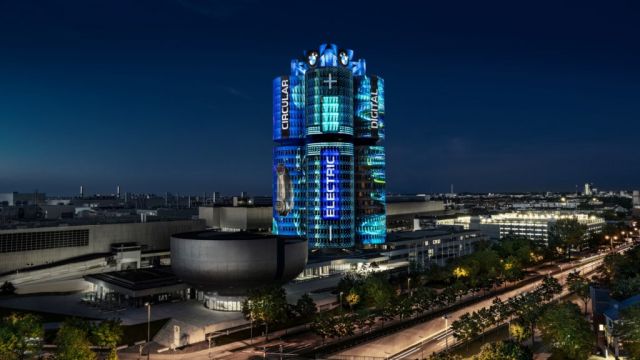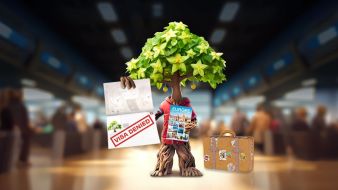When we think of BMW, we think of luxury. Of sportiness. Of all those dream-car sporty saloons, convertibles, and — more recently — SUVs that have rolled out of Munich and into our hearts and desires.
What we tend not to think of when we think of BMW is veganism. Of recycled fishing nets. Of vast arrays of solar cells. Those things, and many more like them, will be intrinsic to the future of BMW though.
To the future of motoring as a whole, come to that, because taking the carbon out of motoring is about more, way more, than just turning over to electric power. Cars will need to be built in a way that’s far more sustainable than they are now if we’re to truly be able to drive without guilt. Indeed, we might only need to make future cars once…

The German car maker is one of the world’s leaders when it comes to sustainable car making. The electric part is the obvious bit — already, BMW is the fourth-best-selling electric car maker in Europe.
Having pioneered electric car design a decade ago with the brilliant little i3, BMW now has the likes of the i4 and i7, and electric versions of the popular X1 and X3 on sale. By 2030, BMW aims to have delivered 10 million electric cars to customers around the world, and for 50 per cent of its global sales by then to be made up of fully-electric models.
Which is brilliant — electric cars run at an efficiency rating of around 70 per cent (according to tests by the Argonne National Laboratory in the US), compared to the very best hybrid-petrol models which work at about 40 per cent, so even if you’re charging up from an electricity network that still relies on fossil fuels, running an EV is still better overall for the environment.
Car production
But, of course, there are carbon emissions from building an electric car, quite significant ones as batteries are energy-intensive to make, so a major challenge right now is to de-carbonise the way in which cars are built, so that your new electric car arrives on your driveway with as little carbon guilt as possible.
It’s happening already. Since July 2020, BMW gets all of its external electric supply from renewables. Its factories in Munich and Dingolfing (just outside Munich) draw their energy from hydroelectric power, while the factory in Leipzig, where the 1 Series and 2 Series models are built, has its own wind farm.

If you’re making electric cars, the batteries that they need, need materials — such as lithium, cobalt, and nickel — and these materials are difficult and messy to mine from the Earth.
So, the solution is to do less mining, and more recycling. In China, where BMW builds models such as the iX3 electric SUV, the company has now set up a ‘closed loop’ battery production facility, which takes old, worn out batteries from prototype cars, from production rejects, and from end-of-life vehicles, and reclaims all the battery material from them, to be made into fresh, new, ready-to-go batteries.
Eventually, a closed-loop production system for electric car batteries should be possible worldwide, where every new battery that’s sold is made up of old, recycled and reclaimed batteries.
Sounds utopian? It already exists, in large part, for smaller batteries such as those used by mobile phones and laptops. Until then, while BMW has to mine fresh raw materials, it’s using digital blockchain tagging to ensure that those raw materials come from mines with the highest standards for environmental protection and human rights.
There’s more to making a car than just the batteries, though.
Recycled plastics
Cars are made of metal, of plastics, of leather, even wood (for decoration more than for structure, these days…) and all of that material can also be recycled and used again. Or, better yet, you can take the plastics — for example — from placed where they’re doing harm and use them in a car, where they’re safely locked away and can’t hurt the environment nor any local wildlife.
BMW is already doing this — using recycled plastic recovered from the oceans.

If you’re sitting in a new BMW iX or iX3 SUV any time soon, look down — those floor mats are made using ECONYL, a material derived entirely from recycled plastics plucked from the sea.
Not only does that mean less plastic floating around and choking fish (there’s also a component derived from industrial plastic waste, so it’s saving on the needless disposal of plastics at the top-end of the supply chain too), it’s also around 25 per cent more carbon-efficient to use this material than to use conventional synthetic yarns.
That’s going to ramp up in the next couple of years — so far, recycled netting is usually recycled into a fabric material, but BMW and Danish company PLASTIX have developed a new technique that means that such plastics can be recycled differently, making them useable again for larger components, such as dashboards and door-trims.
Look out for those structures in the forthcoming all-electric BMW ‘Neue Klasse’ saloon which makes its debut in 2025.
More immediately, BMW has developed a way to cast aluminium in a way that’s almost totally emissions-free.
The company’s vast aluminium production facility in Landshut (just near Salzburg) has also been working with local recycling firms and waste collectors to ensure that almost two thirds of its aluminium output is drawn from recycled material. The current electric version of the Mini Cooper uses alloy wheels that are made entirely from recycled aluminium.
By 2030, BMW aims to have reduced the entire carbon footprint of any car that it makes by 60 per cent. By 2050, the company aims to be entirely carbon-neutral.
Irish initiative
What about locally? Well, BMW Ireland already supports the ‘Picker Pals’ initiative which encourages children from Irish schools — more than 2,300 of them — to get out and pick up and dispose of litter in their local areas.

The plan is that more than 12,000kgs of rubbish can be removed and disposed of or recycled. BMW is taking an active involvement with the project, too, both as a sponsor and via the dealer network in Ireland.
With 90 BMW-sponsored classrooms across the country, and when you factor in the adults and siblings that also come along, there are nearly 6,000 participants in litter picking adventures. Even if they just pick two kilograms of litter each, that’s potentially 12-tonnes of litter collected, or about the weight of two elephants.
Then there’s the concept of just making cars once. Already, in production cars, we can see that software can be regularly updated and changed, meaning that cars can be given, effectively, new dashboards and new infotainment systems without a physical component having to be removed and replaced.
BMW has plans to take that to a logical conclusion — why not just build a car once, and instead of the buyer replacing it with a new car in three years’ time, they instead just replace the bits that are starting to look and feel a bit old? New seats, maybe. New carpets, too. Maybe a replacement battery, or even a fresh electric motor — made of recycled parts of course.
Monika Dernai, BMW’s head of social sustainability, says: “The person we sell the car to initially is almost certainly not the person who will own the car at the end of its life.
"So we need to look both at ownership models — perhaps moving more and more towards leasing models — and the value of the car at the end of its life. Currently, when you scrap a car, it’s worth maybe £100 or €100 to you, so we need to incentivise the return and recycling of cars at the end of their lives.
"So the idea could be that you freshen up the interior, and that you need and develop new skill sets in the aftermarket.
"You design your car so that for instance the seat can be easily removed, and a new front seat can be moved in, and then it's a used car that looks like a new car. It can have the same owner who then doesn't buy a new car, but we still have a business model as BMW and the whole society."
So, eventually, your new BMW might actually be your old BMW, but refreshed and revived by recycled, replacement parts. A car made in a fully closed production loop, where old parts and components from scrapped cars are fed back into the system to make a new car. And you can drive it, guilt-free, knowing that it’s making only the tiniest impact on the environment.








